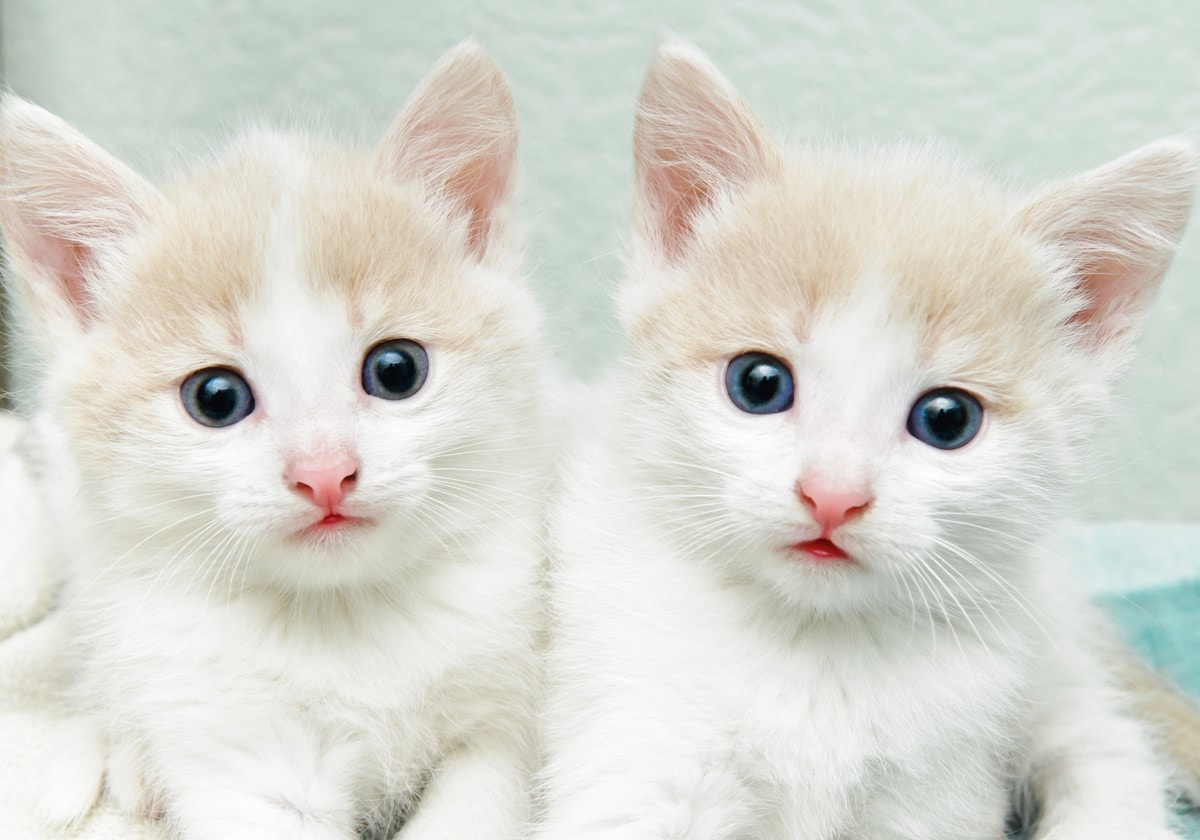The teeth, eyes, gums, and coat can all paint a picture of your cat’s age. The lifestyle and care a cat has received will have some effects on this, for example, is he a former stray, was he neglected by his previous owners, does he have any underlying health conditions? All of these will have an impact on your cat’s appearance and overall health.
The methods listed below aren’t foolproof but can give you some idea as to a cat’s age. If you are still unsure, take him to a veterinarian who may be able to give you a more accurate idea. Checking the teeth is the best method of determining the age of a cat however it isn’t foolproof. If the cat has received excellent dental maintenance (such as regular teeth brushing), then he will have better teeth than the cat who has solely lived on a canned food diet with no dental care.
Teeth
Kittens are born with no teeth, they begin to come in in the following order.
- 2 weeks: Deciduous incisors (the small teeth at the front) begin to come in.
- 3 – 4 weeks: Deciduous canines (the long, pointy teeth next to the front teeth) begin to come in.
- 4 – 6 weeks: Deciduous pre-molars (also known as bicuspids, these are the teeth located between the canine and molar teeth) begin to come in.
- 8 weeks: All baby teeth have come in.
- Around 3-4 months the incisors erupt, followed by the canines, premolars, and molars around 4-6 months. All the adult teeth should be in around 7 months of age.
- 1 year: The teeth are clean, white and have no signs of tartar.
- By the age of 2, tartar is starting to build up on the teeth and the teeth are starting to yellow a little.
- 3-6 years and over, the tartar build-up is more extensive, yellowing increasing and there are signs of wear on the back teeth. Look for signs of gingivitis or gum disease. These include bad breath and reddened gums where the teeth meet.
- 6-10 years. More wear on the teeth, there may be some pigmentation on the gums.
- 10+ years. Heavy wearing of the teeth, at this age there may be some teeth missing.
Growth
- Most (not all) cats reach their full size by 12 months of age (which is around 15 years in human age). Some of the larger breeds, such as the Maine Coon continue to grow until 4 years old, but they are in the minority. I find that even at 1 year old, they are still lithe and have a youthful appearance (as most 15-year-olds do). From 2-3 they begin to fill out a little, not get fat, just lose that coltish look that teenagers/young adults often have.
Body tone and coat
- Young to middle-aged cats should have a firm and lean body with good muscle tone and a shiny, healthy-looking coat.
- I have observed in my own cats, once they reach around 8-9 years of age, they tend to lose some muscle mass and tone.
- The fur can lose its fullness and condition and become a bit duller and straggly looking. This tends to happen in older cats, 10+ but can occur in younger cats, especially if they have underlying medical problems. Always check with your veterinarian about changes to a cat’s coat condition.
- Some cats do grow grey hairs, but they can be sparse. We had a black cat who had a sprinkling of greys, but really nothing that stood out (he died at 13). We now have a 1-year-old chocolate Oriental kitten who has always had a smattering of white/greys on his shoulders. So I’m not sure if it is the best way to determine if a cat is senior or not.
- Middle-aged/senior cats (7/8+ years) are prone to arthritis, which is characterised by a stiff gait, reluctance to jump etc.
Eyes
- Middle-aged to older cats (7+ years) can develop a condition known as nuclear or lenticular sclerosis. This condition occurs as water is lost from the lens, which in turn becomes a pale blue colour. It should be noted that cataracts can also cause a blue/grey hue to the lens, so if you do have a cat with this, see your veterinarian. Lenticular sclerosis doesn’t impact vision but cataracts do.
Claws and feet
- As your cat reaches middle to old age, its claws can become a little dryer, flakier and become overgrown.
- The footpads on kittens are quite soft (like very soft leather). Adult cats have firmer footpads (like firm leather), in seniors they can become thick, dry and even cracked.

